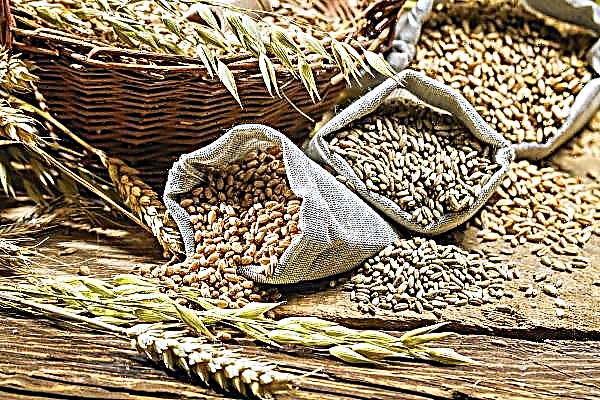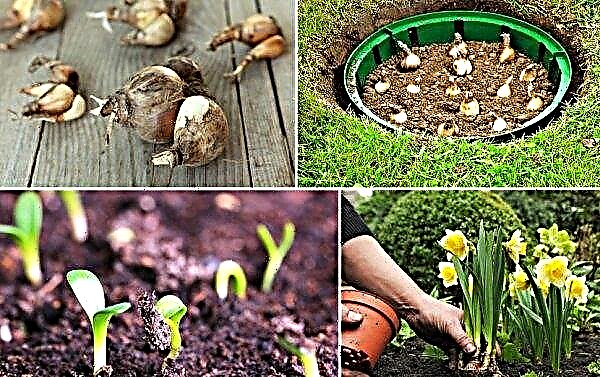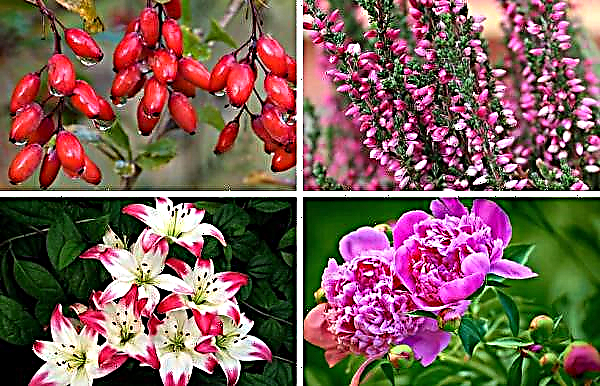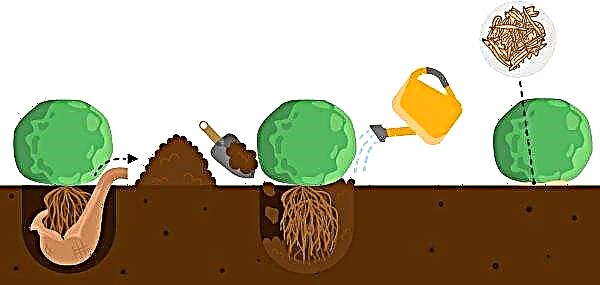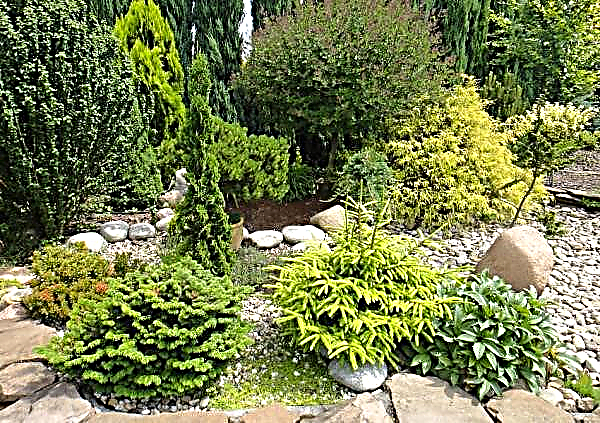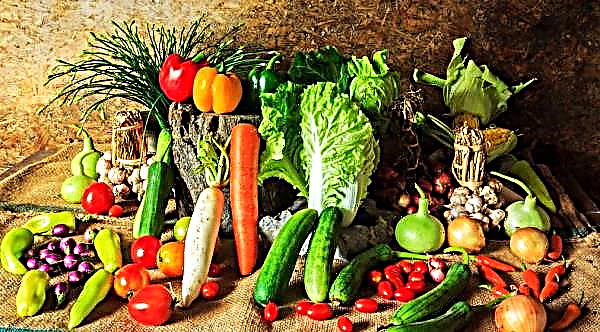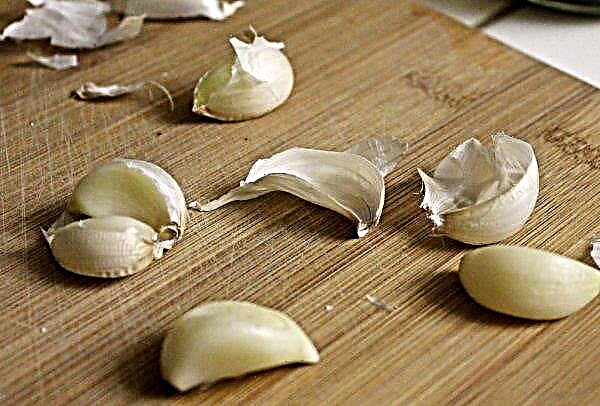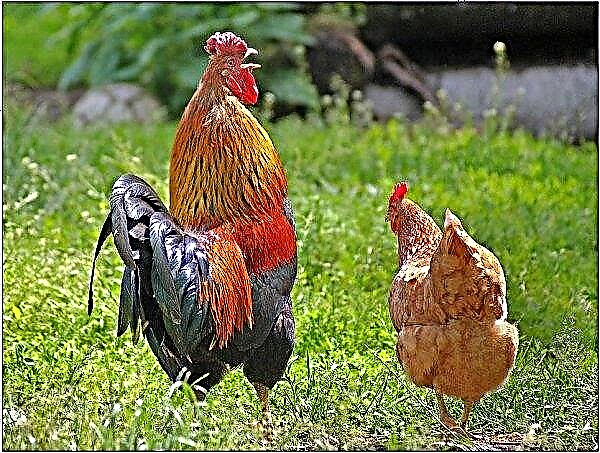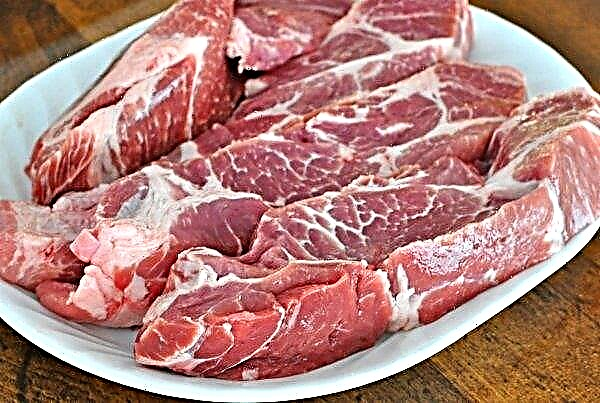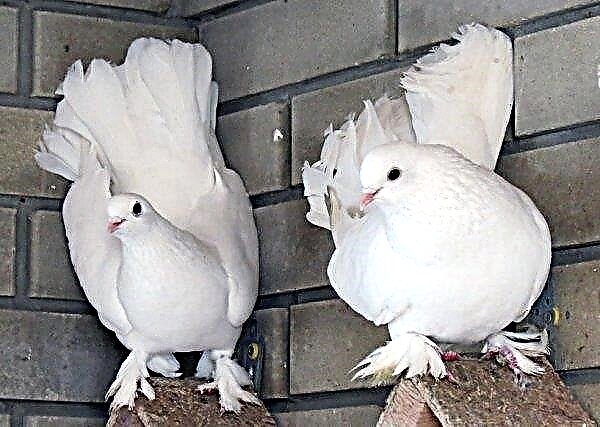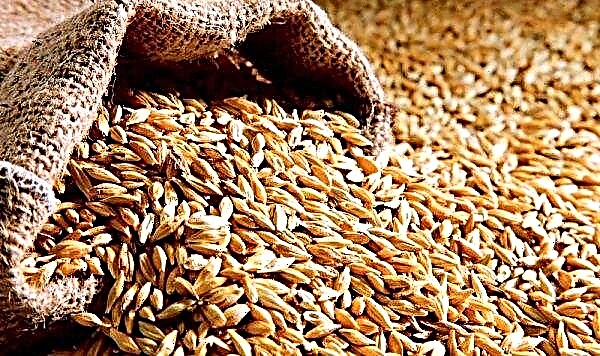When choosing currants for planting on their personal plot, gardeners want it to combine a wonderful sweet taste and a high yield. Prolonged fruiting is characteristic of hybrids. It is on them that it is worth paying attention. The most successful variety of modern selection is Dachnitsa, which has already proved the declared characteristics - high frost resistance, ability to withstand many diseases, etc.
Description of blackcurrant variety Summer resident
Gardeners note that the bushes of this variety have a regular rounded shape with erect branches. The bush is stunted, medium spread. Fruits significantly exceed in size berries of other varieties. Excellent taste characteristics make currants an excellent raw material for use in cooking.
Important! Variety Summer resident - self-fertile. But to increase productivity and improve taste characteristics, it is advised to plant several varieties of currants on the site.
Particular attention to the bushes should be shown during fruiting, since with an abundant harvest, the branches can bend to the ground. But when overripe, the fruits can even crumble.
The ratio of useful components in the chemical composition of fruits will satisfy the needs of even the most demanding consumers. Those who are already growing summer resident in their areas note that this is the most successful of the currant hybrids, as it combines great taste and considerable size of berries.
 This type of currant requires regular and timely thinning of the branches.
This type of currant requires regular and timely thinning of the branches.
Selection history
The plant, obtained as a result of crossing varieties Bradthorpe and Seedling Doves, was included in the State Register in 2004. Work was carried out to obtain a new variety at the All-Russian Research Institute for Selection of Fruit Crops and the Siberian Research Institute of Horticulture named after Lisavenko M.A. Several scientists worked at once on the partitioning process - Z. Zotova, L. Bayanova, T. Ogoltsova, S. Knyazev.
According to the description attached to the variety, it is recommended to grow it in a temperate climate. The plant tolerates a drop in temperature to -30 ° C. Scientists do not advise cultivating the described bush in the southern climate, since it does not tolerate heat and lack of moisture.
Did you know? Currant berries contain more vitamin C in their composition than lemons. Eating a handful of fruits daily, the daily requirement of the body for this vitamin is satisfied.
Appearance, characteristics of berries, ripening time, yield
In comparison with other varieties of currant, this bush is considered small in size. In height, it can reach 1.2 m. The bush density is medium. But this does not mean that thinning and trimming can be forgotten. Shoots grow mainly up and straight. At a young age, they are green, and over time, the branches become stiff and acquire a brown hue.
The root system is quite well developed. The central root can be deepened to 1 m into the ground, and the main volume of the root system is at a depth of 35-40 cm. Leaves - five-lobed and corrugated. On the blades you can see the burgundy recesses. Flowers of the plant are collected in a bunch of 12 pieces. Almost all of them give an ovary. During flowering, you can observe a color change. Initially, the flowers are white or pale yellow in color, then turn into green-yellow, and then become red-violet.
 The ripening of berries is attributed to the early period. Large-fruited variety, the fruits of which have a mass of about 2.2 g each, but there are also specimens whose mass reaches 5 g
The ripening of berries is attributed to the early period. Large-fruited variety, the fruits of which have a mass of about 2.2 g each, but there are also specimens whose mass reaches 5 g
The shape of the fruit is round oval. The berry is covered with delicate, thin skin, dark blue. At the time of full ripening, the color becomes deeper, similar to black. The difference from other varieties is the lack of acidity. The fruits are very sweet. 100 g of berries contain 9.3% sugar, 193 mg of ascorbic acid. The fruit ripening period begins in June and depends on weather conditions. Harvest ripened gradually, giving the opportunity to wait for berries of later varieties. From one bush you can collect up to 2 kg of fruits.
Advantages and disadvantages of the variety
No matter how hard the breeders work, it is impossible to develop an absolutely perfect variety of any plant. Along with positive qualities, there are also negative characteristics. Before deciding to purchase and start growing this variety, you need to familiarize yourself with its features.
- The main advantages of this variety of currant include:
- early ripening;
- large-fruited;
- self-fertility;
- winter hardiness;
- resistance to powdery mildew and kidney mites;
- high palatability of fruits.
- Among the shortcomings are:
- stunting;
- the need for constant "updating" of old branches;
- when overripe, the berries can burst and crumble;
- the need for a high agricultural background.
Agricultural technology
To meet crop expectations, you must follow the rules for growing and caring for shrubs. According to reviews, you should not plant bushes in the place where gooseberries or other varieties of currant grew before. The soil is depleted over a long period and toxins accumulate in it.
Best bush develops in slight shading.. Direct sunlight can adversely affect the ripening process. The loosening of the soil and the application of fertilizers have a positive effect, since the access of oxygen and nutrients directly to the roots improves.
Video: Planting and care of currants
Seat selection and landing
As for the planting dates, for optimal development and rooting of the plant the end of September is best. It is possible to plant in the spring, but due to the high probability of poor rooting, fruiting may not occur.
Important! Currant bushes begin to bear fruit only in the third year after planting.
The best place for planting bushes is considered loose, slightly acidic and fertile soils. The acidity of the soil should not exceed 6.0-6.5 pH. Often, currants take root on poor soils.
It is also necessary to consider the following requirements for the place of growth:
- open area on the south side of the site;
- flat terrain;
- the presence of drainage to eliminate stagnation of water;
- protection of landings from cold winds and drafts.

Compliance with the rules of planting ensures rapid growth and good rooting of the plant. The distance between the bushes should be 1.5 m, which will prevent shading in the future. The width and length of the landing pit should be about 50 cm, and the depth should be 60 cm. The hole must be filled with a mixture of soil and fertilizers by 2/3.
Did you know? Scientists believe that for every age there should be «its» currant. For children - black, for adults - red, and for older people - white. This is explained by the fact that each type of berries has differences in chemical composition, which directly affects the physiological processes of the body.
The feeding complex consists of:
- 120-140 g of superphosphate;
- up to 2 kg of wood ash;
- 15 kg of compost or humus;
- 65–75 g of potassium chloride.
Place the seedling in a hole, and spread the roots in different directions. Fill with soil and compact it. Under one bush you need to pour about 2-2.5 buckets of water. Shorten the seedling to 3 buds above the ground.

Care
Regular watering and the application of mineral fertilizers, as well as the prevention of diseases and plant damage by pests, increase the chances of the crop for healthy development. It is desirable to carry out watering as necessary.
In this case, you need to carefully ensure that there is no saturation of the soil with moisture. This type of currant requires periodic irrigation. Young bushes moisten as the topsoil dries. Older plants no longer require such frequent fluid intake.
There are certain periods in the development of currants, when a lack of moisture can adversely affect the formation of the plant. These stages include:
- bloom;
- fruit formation.
 Under one bush make 1.5-2 buckets of water. If the air temperature rises, the amount of water can be increased
Under one bush make 1.5-2 buckets of water. If the air temperature rises, the amount of water can be increased
Feeding accelerates the growth and development of currants, and also increases the yield of the bush. Such manipulations are performed several times a year:
- In the spring. It can be organic or ammonium nitrate. Dissolve 50 g of the drug in a bucket of water and pour under a bush.
- Fall. It is better to use the following mixture during this period: Ammophos and wood ash. Pour 2 tbsp. l (30–40 g) of mineral fertilizer in a container and pour a bucket of hot water. Stir until the granules are completely dissolved. Then add 100 g of wood ash. Mix everything thoroughly. Pour 1-2 liters under the bush, and if the plant is old - 5 liters of solution.
The “golden” rule of watering and top dressing is that you need to know the measure in everything, since exceeding the spread rate can give the exact opposite result.
Important! «Been through» the onset of return frosts during flowering to plants will be easier if the bushes are fumigated with smoke during this period. Such manipulation will save the flowers from freezing.
Pest and Disease Control
Hybrid summer resident resistant to powdery mildew and renal mite. A preventive inspection of the bush will help in time to prevent the appearance of the disease and pests. The beginning of the struggle at an early stage of the defeat will eliminate the problem.
The main pests of currants are:
- kidney mite;
- glass bug;
- aphid.

Preventive methods that help prevent the occurrence of anthracnose, septoria and terry include:
- choosing the right place for landing;
- circumcision of damaged areas;
- processing of tobacco tincture before flowering;
- after thawing the soil - irrigation with hot water.
In the spring, treat the bush with a solution of Bordeaux mixture. The finished product can be bought at a hardware store. Dilute the drug: 250 ml per bucket of water. Spray them all the plants in order to prevent the likelihood of the transition of the disease to a healthy plant.
Did you know? Previously, currants were called "monastery berry." This is due to the fact that initially it was grown exclusively in monasteries. The monks used it not only for food, but also for the treatment of many ailments.
Cope with a kidney tick it is possible by treating the bush with a suspension of colloidal sulfur. Prepare it at the rate of 75 g of the main component per 10 liters of water. Spraying should be done in early spring. To get rid of aphids, it is necessary to spray the bush until the buds swell with a mixture of 20 g of Chlorofos and 30 g of Karbofos (per 10 l of water). With a glass-case, spraying the bush after flowering with “Aktara” (1%) will help.

Trimming and shaping a bush
The plant pruning procedure has certain goals:
- improved access of air and light to fruits;
- plant shape formation;
- stimulating the growth of new shoots;
- removal of damaged and diseased branches;
- thinning out old branches that no longer bear fruit;
- redirecting the flow of nutrients to the fruiting branches.
 Fig. 1. Currant pruning: a - annual seedling; b - a biennial bush; c, d - shortening of shoots. Fig. 2. Currant bush before anti-aging pruning (a), after it (b) and pruning of a neglected bush (c)
Fig. 1. Currant pruning: a - annual seedling; b - a biennial bush; c, d - shortening of shoots. Fig. 2. Currant bush before anti-aging pruning (a), after it (b) and pruning of a neglected bush (c)
Pruning can be done in early spring - before the movement of juices. If you do this in the fall, then only after the leaves fall.
Trimming must be carried out, observing the rules:
- In the first year, the shoots should be shortened by 2-3 buds. Later, from these buds, the main skeleton of the bush will form.
- In the second year, it is necessary to prune the branches, leaving only the buds for the growth of young shoots.
- For 3-4 years, leave only 3-6 young, strongest shoots. The tops need to be shortened a little.
- By 5-6 year, the bush will be fully formed. After this period, only sanitary thinning is carried out.
3-5 new branches grow in a year. Last year should be shortened to 3-4 kidneys. Regular thinning helps to renew shoots and maintain fruiting at a high level. After the trimming procedure, you need to cut the places of the cut with garden var.
Wintering
Breeders say that the bush is able to winter in the open ground without protection with covering material when the temperature drops to -30 ° C. But it is worthwhile to understand that this is characteristic of those plants that are already well rooted. If this has not happened yet, then it is better to form additional protection.
Recommended mulching soil near the trunk zone. As an additional insulation, you can use cardboard, and on top wrap the bush with cellophane.

Harvesting and transportation of the crop, shelf life of berries
The maximum number of berries can be collected from the bush during the period from 5 to 7 years of plant life. Harvest ripens gradually. It is best to store berries in a refrigerator in plastic containers, where currants can “spend” about 2-3 days.
The fruits do not crack during freezing. Shelf life in the freezer is 2 years. Although the fruits are soft, they tolerate transportation well enough. Currants are often used both fresh and for making jams, preserves, and medicinal tinctures.

Growing this plant in a personal plot will provide your family with a supply of vitamins for a long period. And the gradual ripening of Dachnitsa berries allows you to enjoy the fruits almost all summer.
Network user reviews
I consider Dachnitsa one of the best varieties of black currant. I grow it for many years - this variety is very sweet, large-fruited, productive, resistant to disease, has compact bushes. Its only drawback is that it is practically not rooted by lignified cuttings. With respect ...

